Ultimate Kettlebell Guide: Types, Benefits, Buying Tips
Author:
Reviewed by:
(21 years of Oly Lifting experience)
Unlock your full potential by engaging with our experts and community! Have questions about your fitness journey or looking for expert advice on weightlifting techniques? Don’t hesitate — leave a comment below and Ihor Shymechko will provide a personalized answer and insights to help you reach your goals.
Torokhtiy is reader-supported. Some links are affiliate links, and we may earn a commission at no extra cost to you. See our disclosure page for details.
When you hear someone say that kettlebells revolutionized strength training and conditioning – believe them. Whether you want to build strength, improve cardiovascular fitness, or just overall functional movement, kettlebells have you covered.
The reason they’re so popular is not just because they’re so effective. They can also be used by both beginners and professionals, so there’s a vast number of people who can benefit from them.
They’ll give you a full-body workout and target those muscles that traditional weightlifting can neglect.
Let’s jump right into the article!
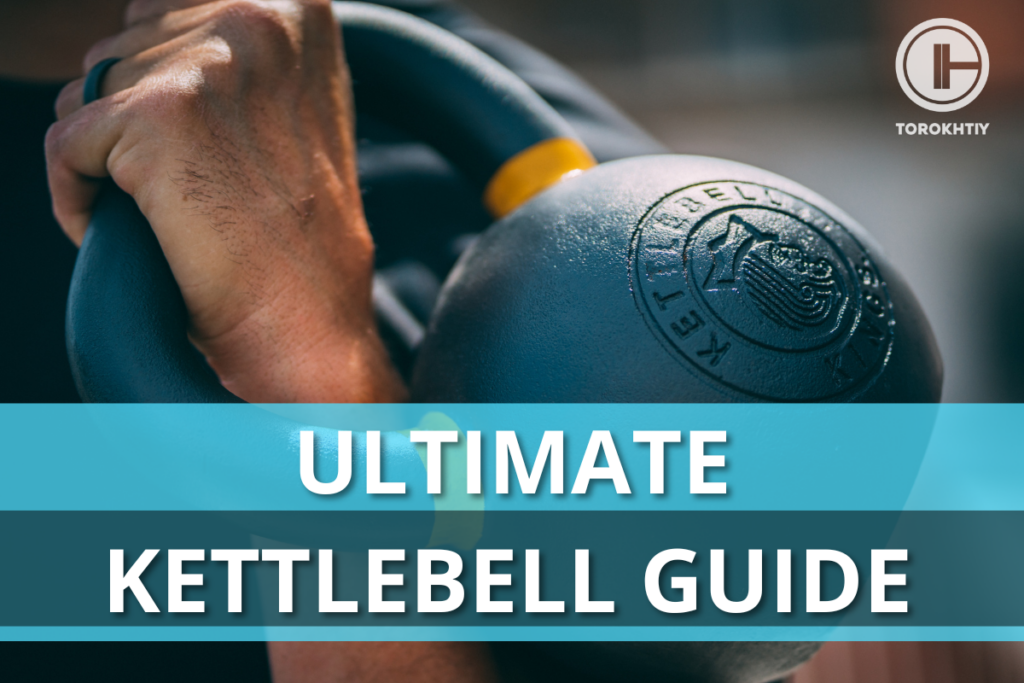
What Is a Kettlebell?
Kettlebell is not just a weight; it’s a dynamic tool that offers a unique mix of resistance training, core engagement, and full-body conditioning, making it a favored choice among a lot of athletes.”
It looks like a cast-iron cannonball with a flat base and a top handle. The handle allows you to grip it in a lot of different ways, which is why you can use it for lifting and swinging movements. This also means you’re engaging multiple muscle groups at the same time.
Kettlebells come in a variety of weights, typically from a few pounds to over 100 pounds, and it makes them suitable for people of all fitness levels.
It’s a very accessible, compact piece of equipment and can be used almost anywhere – gyms, homes, parks, even hotel rooms.
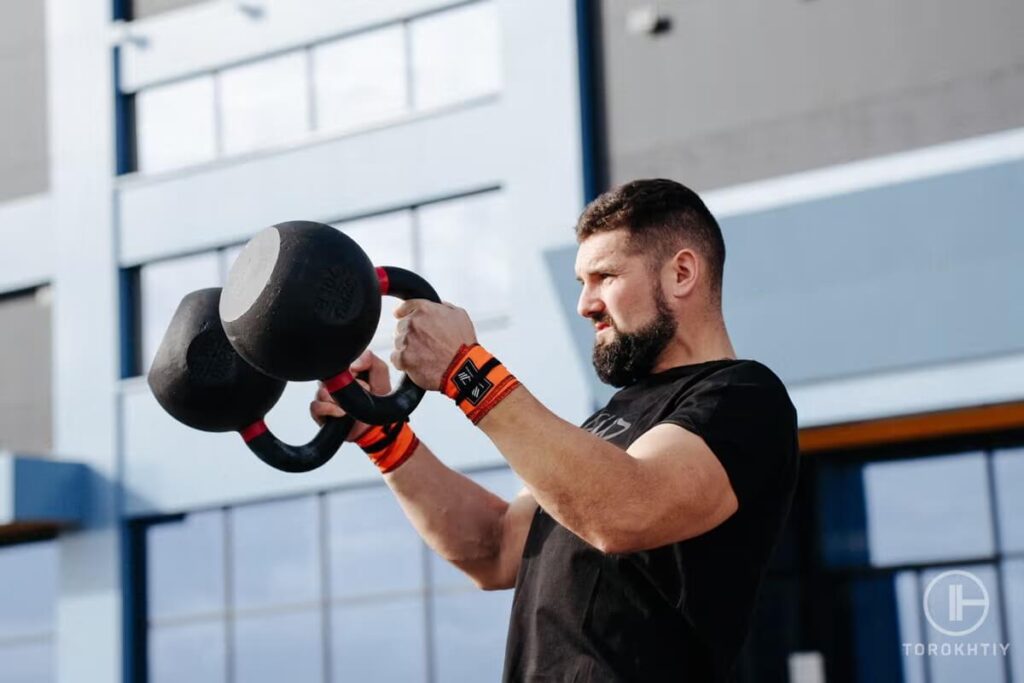
Types of Kettlebells
Kettlebells come in a lot of shapes and sizes, which is what makes them so versatile. They’re made to work for a lot of different people and a vast number of workouts. It’s important toAlso known as traditional kettlebells, these have a very solid construction and a handle on top. There are a lot of weight ranges with these types of kettlebells, and they’re good for both beginners and professionals. choose the right type of kettlebell – one that’s going to work for your fitness level and the exercise you’re trying to do.
1. Kettlebells by Type
• Cast Iron
Kettlebells come in a lot of shapes and sizes, which is what makes them so versatile. They’re made to work for a lot of different people and a vast number of workouts. It’s important to choose the right type of kettlebell – one that’s going to work for your fitness level and the exercise you’re trying to do.
• Competition
These have to adhere to strict weight and dimension standards because the movements need to be consistent for competitions. Their size is typically uniform (whatever the weight may be).
• Adjustable
They’re a very cost-effective and space-saving solution. With adjustable kettlebells, you can easily change the weight by adding or removing plates. Their versatility is what makes them so popular.
• Soft-Sand Filled
Instead of being made from cast iron (as the typical kettlebell), these are generally bags made from high-quality reinforced material and are filled with sand. This makes them softer than the average kettlebell and they are completely safe to be dropped onto the group, without the risk of damaging the floor (or the kettlebell).
• Specialty
You’ll immediately recognize specialty kettlebells because they look unique and stand out from the crowd with their unique shape or design. They can look like animals or objects that have nothing to do with fitness or kettlebells. They’re fun and are a splash of creativity.
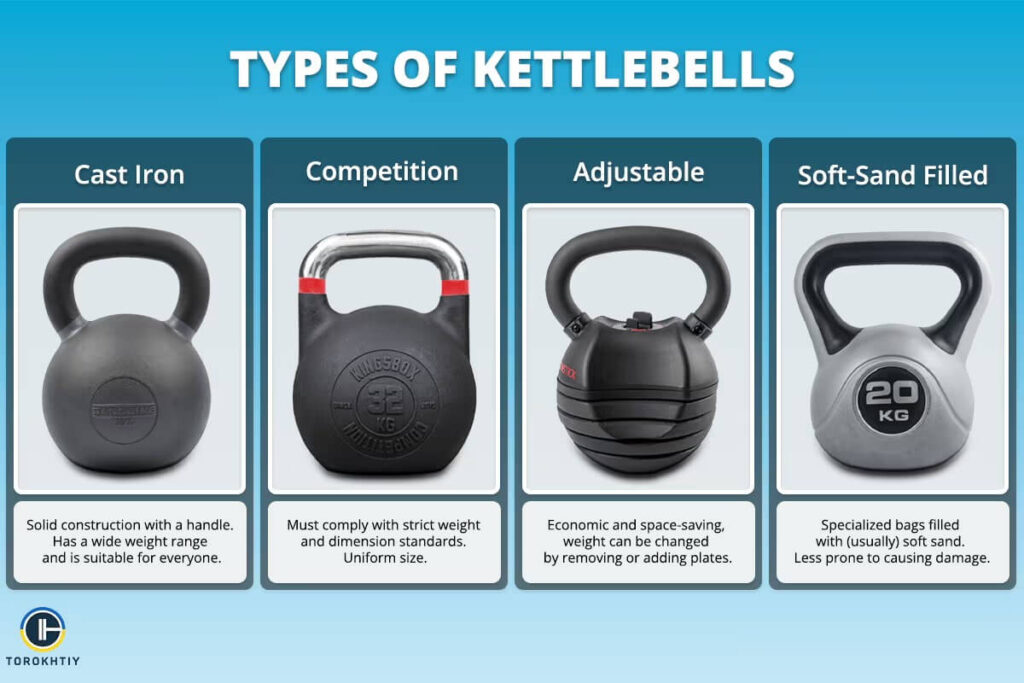
2. Kettlebells by Coating
• Vinyl-Coated
Iron is prone to rusting and corrosion, so to prevent that from happening, some kettlebells have a protective layer of vinyl material. It also makes the surface a lot more smooth than it would usually be without vinyl coating.
• Rubber-Coated
The rubber coating protects both the kettlebell and the floor and you’ll usually see them in commercial gyms or anywhere with high traffic, where kettlebells are used very frequently.
• Neoprene-Covered
Some of the grippiest kettlebells come with a neoprene coating that makes the grip very comfortable and prevents slipping and accidents caused by slips. They’re mostly used for fitness classes and home workouts.
• Powder-Coated
Powder-coated kettlebells have a very sleek, matte finish that’s slightly textured. Compared to vinyl coating, this is grippier and doesn’t scratch as easily.
9 Kettlebell Benefits
Kettlebells can look (and feel) intimidating, especially when it comes to those that are very heavy. That’s completely understandable, though, because the workouts they provide are usually pretty challenging. They do, however, come with a lot of benefits, particularly ones regarding health and weight management.
✅ Versatile Training Options
Kettlebell workouts are a great way to engage multiple muscle groups at the same time (e.g., swings) and will provide full-body workouts. They are also an amazing way to do isolated exercises where you target specific muscles (e.g., shoulder press, leg squats).
✅ Cardiovascular Fitness
A lot of workouts with kettlebells have very dynamic movements that elevate your heart rate. This boosts cardiovascular fitness and helps with fat loss. Not only that – kettlebell exercises/workouts are very efficient when it comes to burning calories, and they will help you to lose weight.
✅ Better Bone Density
All weight-bearing exercises are good for bone density and joint health, and those involving kettlebells are no exception. They can help with preventing osteoporosis but are also used as a part of treatment.
✅ Compact/Space Saving
Kettlebells are typically on the smaller side when it comes to gym equipment. Due to their compact size, they are easy to store (especially if they are designed with a completely flat bottom – which most kettlebells are).
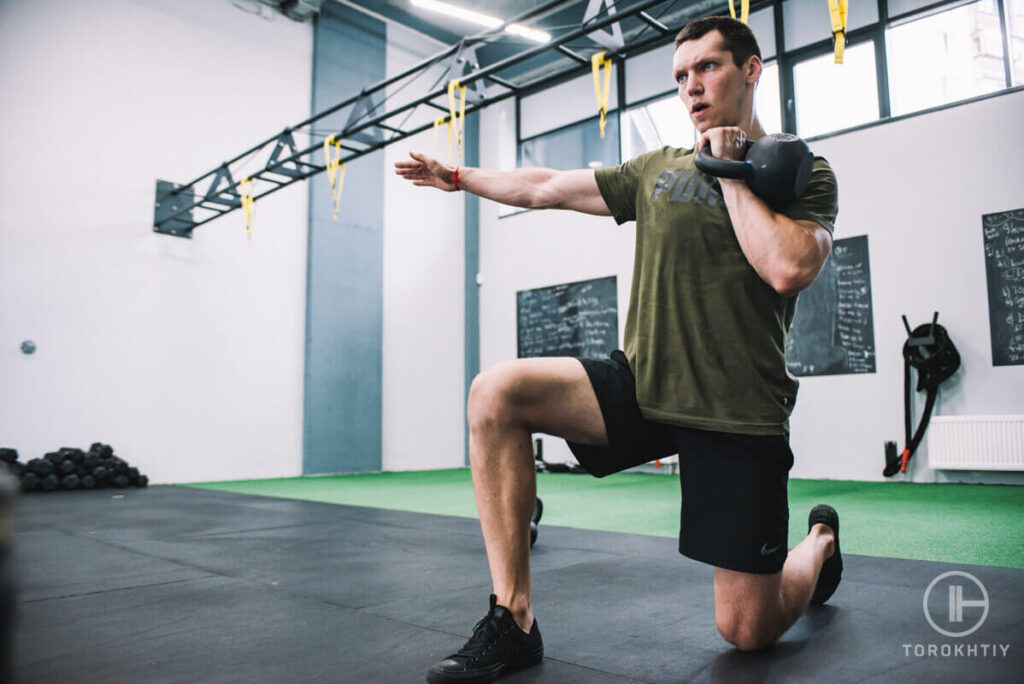
✅ Built to Last
Lots of kettlebells are made from cast iron, and are nigh indestructible. So unless you misplace them, or get rid of them – you can consider them a lifetime purchase.
✅ Home Workout-Friendly
If you’re building a home gym and you have to choose only one piece of gym equipment, you won’t go wrong by choosing a kettlebell. Its versatility and compactness make the kettlebell an ideal piece of gear for any home gym setup.
✅ Increased Flexibility/Mobility
The typical swinging or lifting kettlebell exercises usually require a full range of motion. This helps improve flexibility over time. A single exercise or movement such as the ‘Turkish get-up’ or the ‘Kettlebell swing’ can be used to enhance the mobility in your shoulders, hips, and ankles.
✅ Improved Coordination and Balance
Kettlebell workouts often involve complex movements. These typically require simultaneous coordination of multiple muscle groups, as well as focus. Because of this, kettlebell workouts do affect one’s balance and hand-eye coordination in a positive manner. This is beneficial in fitness/sports, but also in everyday life.
✅ Cost-Effective Investment
One single kettlebell can be the jack of all (or at least most) trades in your gym, thus replacing a variety of other workout equipment that you’d otherwise require (especially if you’re building a home gym).
Our expert Sergii Putsov claims:
«Kettlebells? Absolute game changers! Every gym should have them. Their unique, off-center designs aren’t just about lifting: it’s more of a full-on challenge to both stabilizers and powerhouse muscles. I use kettlebells in my personalized training programs all the time for swings, snatches, cleans, and even the challenging Turkish get-ups — that’ll help you improve your performance, refine your posture, and develop core strength.»
What to Look For in the Best Kettlebells?
If you’re looking to buy a kettlebell and you check the market, you might find yourself overwhelmed with all the choices available. We will leave you with a number of tips on how you can more easily narrow down to a kettlebell that will suit your needs more closely!
1. Weight Range
If you don’t want to invest in a set of kettlebells, get an adjustable one. You will likely need a somewhat wide weight range so you can use the kettlebell for more than one type of workout. Also, as you progress, you’ll find that you need a bigger weight. You can buy another kettlebell, sure, but with adjustable kettlebells, all you need to do is add an extra plate to it.
2. Versatility
The basic design of most kettlebells allows you to perform a variety of exercises. Still, not all kettlebells are created equal. When it comes to versatility in kettlebells, you are looking for handle design, grip quality, the material used, and weight adjustability (if available).
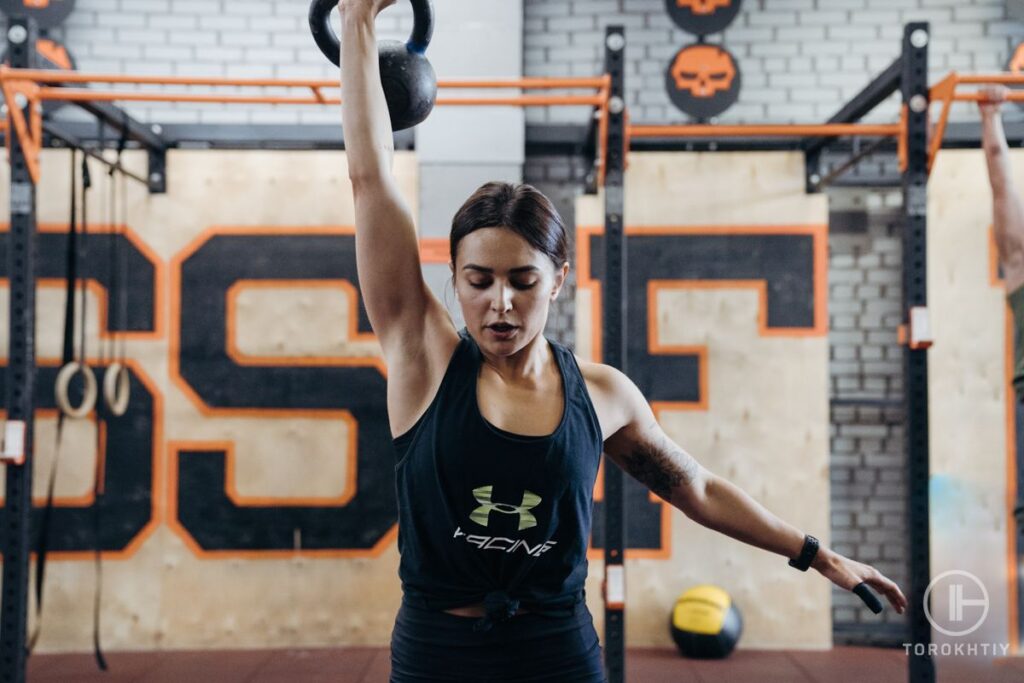
3. Coating
Kettlebells have a lot of different types of coating, so make sure you know exactly what you want. The coating affects grip, and durability and protects against rust and corrosion. Some of the options include rubber, vinyl, powder, and neoprene.
4. Handle
This is very important for a safe and comfortable grip. A handle can make or break a kettlebell, and it can also mean the difference between getting injured or not. A good handle should have enough space to be held with one or two hands, and it needs to have a textured, non-slip grip.
Tips From the Champ
When choosing a kettlebell for your workouts, remember that their design can significantly impact your exercise experience. To ensure safety and comfort, prioritize kettlebells with well-designed handles that provide ample space for one or two-handed grips, as well as a textured, non-slip surface. Additionally, consider the material and weight adjustability options for a versatile and effective fitness routine.
Olympic Weightlifting Champion
5. Durability
Cast iron or steel are your best bet when it comes to durability. You can find some durable kettlebells made of plastic, too, but they still won’t be as durable as those made of cast iron or steel.
6. Price/Quality
It’s all about the balance. High-quality kettlebells can have a hefty price tag but look at it as an investment – it will last you a long time.
Rogue Kettlebell – E Coat
- Weight range: 9-88 lbs
- Increments: 9lb / 13lb / 18lb / 26lb / 35lb / 40lb / 44lb / 53lb / 62lb / 70lb / 80lb / 88lb
- Adjustable: No
- Handle diameter: 1.2″ (9lbs.-18lbs.), 1.4″ (26lbs.), 1.5” (35lbs.-88lbs.)
- Material: Cast Iron
- Coating: Black E-Coat, Semi-Gloss
- Color: Black
- Price per pound: ∼ $2.49
- Can be dropped? Yes
These kettlebells were made in collaboration with Cadillac Casting, Inc. – a renowned Midwest foundry with a history that spans over almost a century. They’re the epitome of quality, durability, and performance.
The attention to detail that went into making these cast iron kettlebells is almost unbelievable. They’re made of ductile iron construction, which is a kind of material known for its resistance to corrosion, strength, and durability.
The best thing about them, though, is not their appearance or durability – it’s the range in available weight that ROGUE offers. Since the weight ranges from 9 lbs. to 88 lbs., these would be good for beginners, recreational users, and professionals… Pretty much, anyone who wants to include kettlebells into their fitness routine.
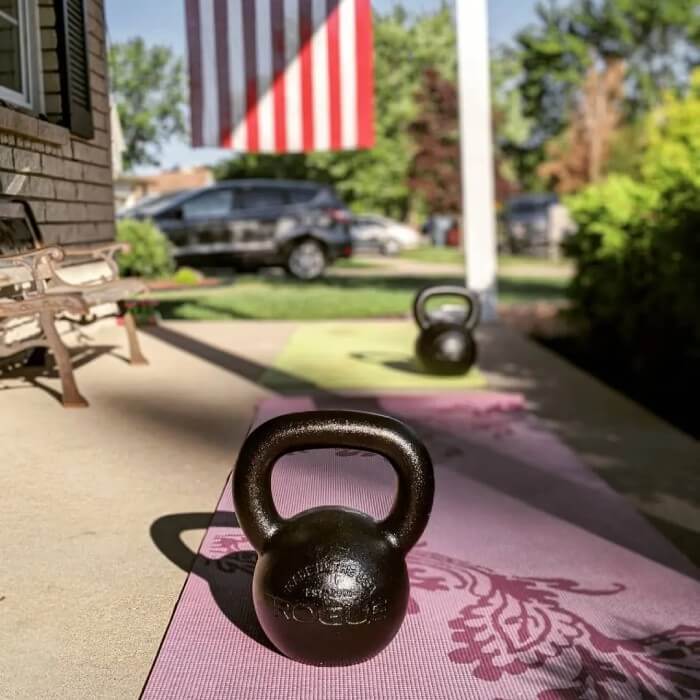
The 40 lbs. kettlebell meets the required specifications for use in the US Army’s Combat Fitness Test (ACFT), which shows how high-quality these are.
These are almost impeccable in terms of quality, durability, and performance. They can definitely serve as professional kettlebells, too.
Adjustable Kettlebells vs. Standard
Before you decide what type of kettlebell you want, you first need to see if you want it to be adjustable or not. You might be tempted to go for the adjustable one because it’s (usually) more cost-effective, but there’s a reason both of these are on the market.
The biggest pro an adjustable kettlebell has is the most obvious one – it is an economical way to have several weight options. It also saves space, and it’s very versatile. Changing the weight is simple – just add/remove a plate, and that’s it. The transition is smooth and seamless, and you won’t feel like it’s interrupting your workout.
They’re great for anyone who wants to progress gradually, as their skills improve, or make changes in the intensity of their workouts.
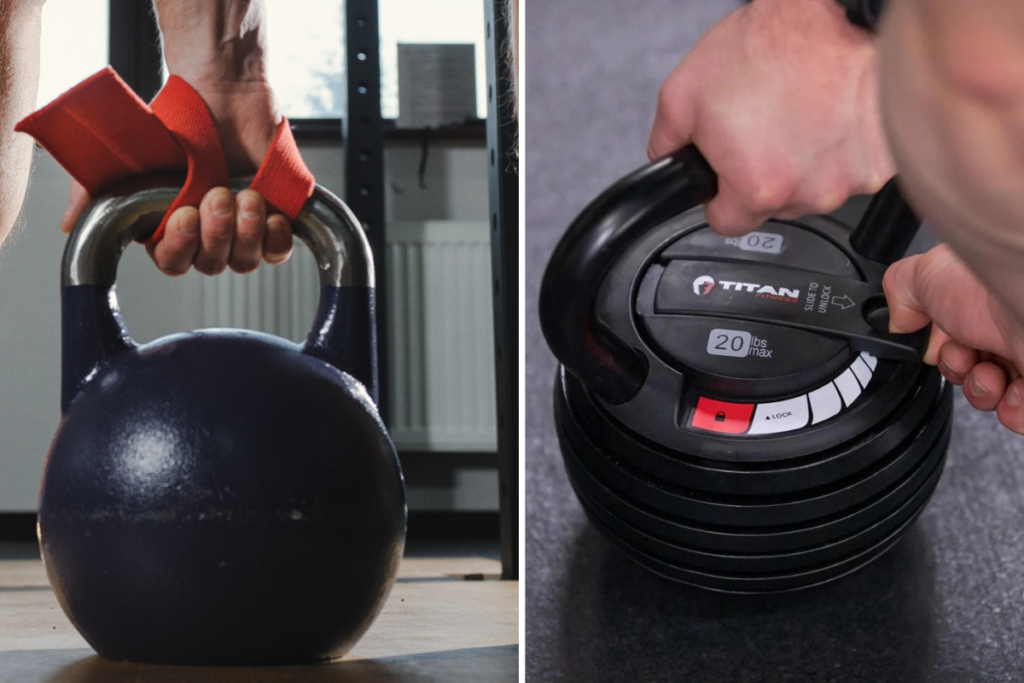
Unlike adjustable kettlebells, standard ones have a fixed weight. They’ll give you a consistent weight and feel distribution. They’re sturdier than adjustable kettlebells because they’re made as a single, solid piece, and this makes them better for long use compared to the adjustable ones.
They’re usually used by people who have well-defined fitness routines and don’t have the need to switch between different weights.
| Criteria | Adjustable Kettlebells | Standard Kettlebells |
|---|---|---|
| Weight Flexibility | Adjustable | Fixed |
| Cost-effectiveness | Usually more cost-effective since you get multiple weights in one | Requires multiple purchases to get different weights thereby reducing its cost-effectiveness |
| Space Efficiency | Saves space (one kettlebell, multiple weights) | Requires more space for multiple weights |
| Weight Transition | Smooth and seamless (add/remove plates) | Not applicable (fixed weight) |
| Durability | Usually less durable because of the complex design | Sturdier because it is a single, solid piece |
| Comfortness of Use | Can be less comfortable due to complex designs | Usually more comfortable (and familiar) for users |
| Weight Limitationsn | Limited to a predetermined range of weights | Limited only by the min and max weights that have been produced |
Competition vs. Standard Kettlebells
If you’ve gone through the reviews, then you saw some competition kettlebells included in the list. Competition kettlebells have to meet some very strict standards when it comes to weight and dimensions, so they’re great for competitions but also for any training that needs consistent movements.
Competition kettlebells will come in very handy if you’re trying to perfect your technique because, regardless of the weight, their dimensions are uniform. The resistance they offer is predictable and precise, and the handle size and shape are designed for minimal friction and optimal grip. This makes transitions between exercises seamless.
On the other hand, standard kettlebells are good for all sorts of workouts and are a lot more versatile. You can adjust the weight based on what you feel most comfortable with, and they are usually cheaper than their competition counterparts.
| Criteria | Competition Kettlebells | Standard Kettlebells |
|---|---|---|
| Weight Flexibility | Fixed | Fixed |
| Dimensions | Uniform regardless of weight | Varies based on weight |
| Resistance | Predictable and precise | Variable |
| Handle Design | Minimal friction/optimal grip | Standard design |
| Price | Usually more expensive than standard kettlebells | Usually more affordable than competition kettlebells |
Kettlebell vs. Dumbbell vs. Barbell
It only makes sense to see how these differ from one another and how they compare. Each of them is very popular when it comes to strength training and is a great way to build muscle mass and fitness.
Kettlebells are known for their shape – a top handle with a rounded weight and a flat bottom. They can be used for a lot of different workouts, and they’re ideal for functional training. Kettlebells will engage a lot of muscle groups at the same time.
Much like the kettlebells, dumbbells also have very recognizable looks. They consist of a grip handle and two weights (both weighing the same) on each end. They’re versatile, too, but they’re better for body toning, bodybuilding, and rehabilitation. They’re good for isolated muscle targeting.
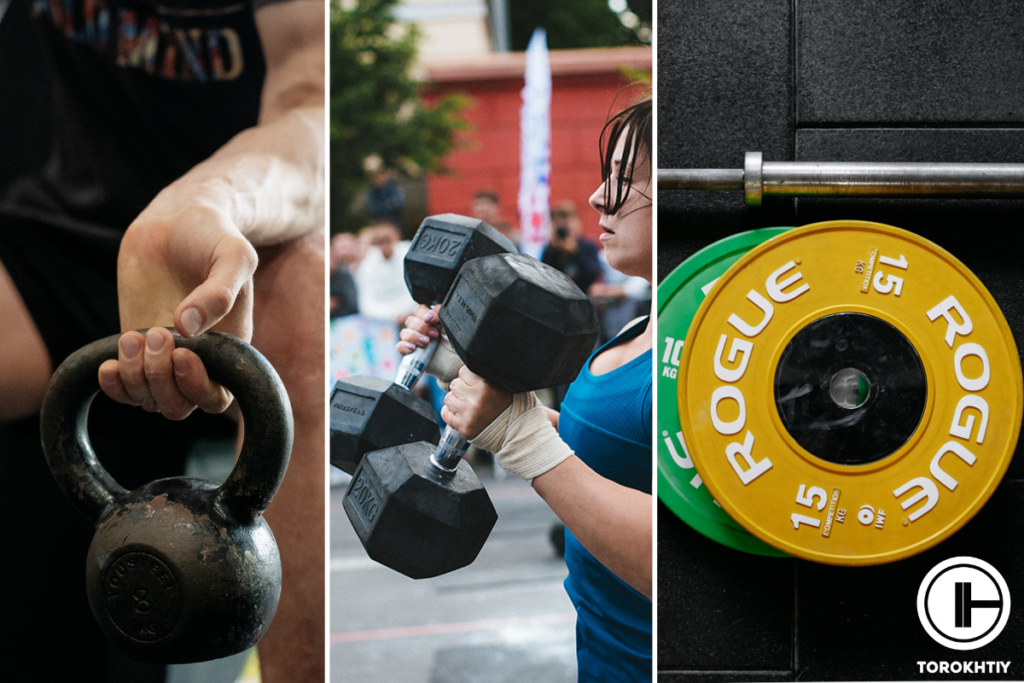
Barbells are long bars with a weight plate attached to each end. They’re probably the most popular tools for strength training and will involve more muscle groups than dumbbells.
They’re an absolute cornerstone of powerlifting and all workouts that focus on building strength. You can add substantial weights to barbells, and they target large muscle groups.
Each of these tools excels at something different, so if you want a well-rounded fitness routine, don’t exclude either of them. The choice, of course, comes down to your preference and what results you’re trying to achieve, but kettlebells, dumbbells, and barbells all have their place in a good fitness routine.
| Criteria | Kettlebells | Dumbbells | Barbells |
|---|---|---|---|
| Appearance | Top handle, rounded weight, flat bottom | Typically knurled grip (not always) handle with equal weights on both ends | Long bar with attachable weight plates on each end |
| Primary Use | Functional training (versatile for various workouts) or kettlebell specific workouts | Body toning, isolated bodybuilding, rehabilitation, isolated work of specific muscle group | Strength training (cornerstone of powerlifting and strength building) |
| Weight Adjustability | Typically fixed weight | Typically fixed weight | Adjustable with different weight plates |
| Size | Compact (varies based on weight) | Compact (length varies based on weight) | Longest out of the three (length varies based on bar type and plates used) |
| Weight Range | Typically 5-100 lbs | Typically 3-50 lbs | Typically 15/25/45 lbs barbell + weight plates |
| Versatility | Highly versatile (dynamic movements, swinging, ballistic exercises, functional training) | Moderately versatile (great range of motion, isolation exercises, unilateral exercises, etc.) | Least amount of versatility (heavy compound lifting, not as effective for targeting smaller muscle groups) |
How to Use Kettlebells: Recommendations and Precautions
Using a kettlebell (as with any heavy piece of equipment) needs to be handled safely and effectively. It goes way beyond simply picking a kettlebell up and swinging. There are a number of factors that need to be considered long before the exercise has started.
Naturally, this thought process will be more ‘on the spot’ as you get more experienced, but it never goes away. Here’s a list of things that you should keep in mind when using a kettlebell.
1. Choose the Right Weight
There are a lot of tips, tricks, and safety measures to pay attention to, but choosing the correct weight is the absolute most important thing you need to do. Choose the weight according to your fitness level, or you can even go under it a little bit if this is your first kettlebell. Get used to how it feels and see what workouts are the most comfortable before you up the weight.
2. Warm-Up
Warming up is important, so don’t start your workout without it. Warming up will increase blood flow, flexibility, and range of motion. Dynamic stretches and light cardio are always a good start.
3. Maintain the Proper Form
Your posture needs to be strong, and your spine needs to be neutral. Engage the core and keep your shoulders back and down. This will prevent strain on your back and shoulders.
4. Hold the Handle
When handling a kettlebell (especially if going heavy) a firm grip is crucial. For two-handed exercises, your palms should be facing one another. For one-arm exercises, your grip will vary from exercise to exercise, but ensure the grip is solid. This way you’ll have more control throughout the movement (as well as safety).
5. Mastering the Basics
Start with some basic swings, squats, and presses, and once you’re good at those, you can move on to something more advanced.
6. Hip Hinge
You’ll notice that a lot of kettlebell movements include a hip hinge. You need to bend at the hips, not the waist, and keep your back straight. Push the hips back and bend the knees a bit to engage your hips and glutes.
7. Don’t Overextend
Avoid overextending your lower back during workouts like overhead presses or Turkish get-ups. Keep your core engaged and control the movement with proper alignment.
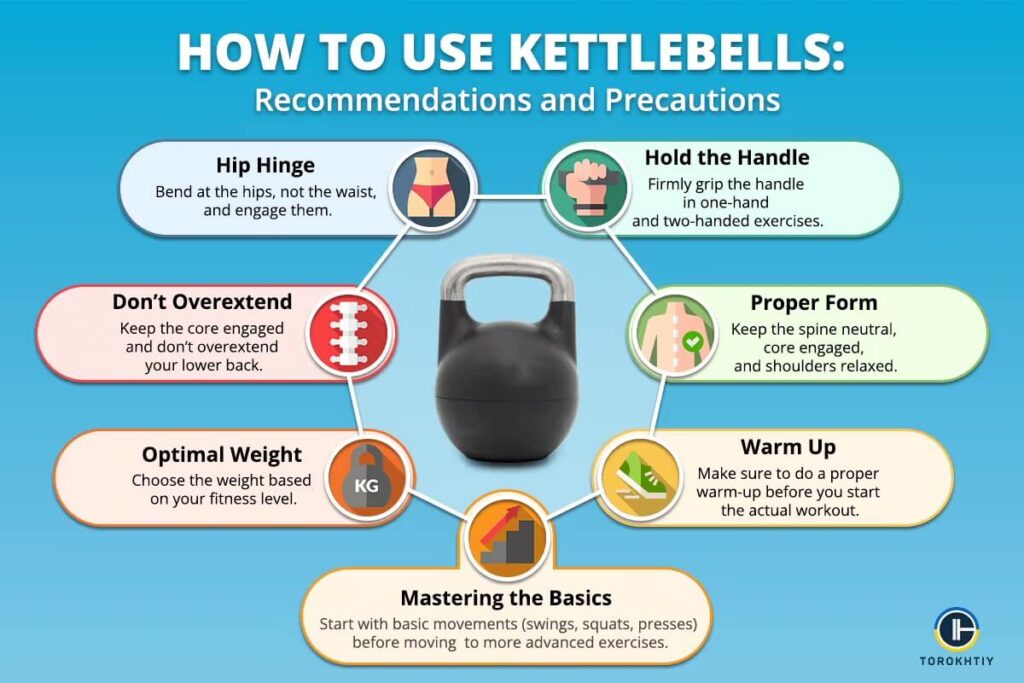
5 Most Popular Kettlebell Exercises
Since kettlebells are so versatile, there’s a huge number of workouts you can include them in, and even the most basic ones are very effective.
1. Swings
Take swings, for example. It’s the foundation of kettlebell workouts, and it’s simple to do. For kettlebell swings, start with a hip hinge motion and then swing the kettlebell between the legs. Use hip thrust to bring it to your chest. That’s it. It’s as basic as can be, but still effective.
2. Goblet Squat
If you’re looking for something a little less interesting, you can try the goblet squat. You hold the kettlebell close to your chest with both hands and then do some squats. For this one, your posture needs to be upright while you lower yourself into a squat.
3. Turkish Get-Ups
Turkish get-ups are another of the most popular workouts that you can do with a kettlebell. Here’s how you’d do one with your right hand.
Lie on the ground in a crouching position (on your right side). Then take the kettlebell and hold it above you with your right hand. After that, with your left (the free hand), support yourself on the ground, start raising your hips, and do a low sweep with the left leg, so that it is behind you.
Further, support yourself with your left knee (so left knee + left hand). Then release the support from your left-hand intro into a straight kneeling position. Proceed to stand up straight. At all times ensure that the right hand (the one holding the kettlebell) is holding the kettlebell above the level of your head.
4. Kettlebell Clean and Press
The kettlebell clean and press is also something you will most likely want to try. It’s simple to do – lift the kettlebell to shoulder height and then press it overhead. Make sure the lifting motion is fluid for this one.
5. Deadlift + Snatches
Who can forget the deadlift and snatches? The kettlebell deadlift is much like your regular deadlift; just pick the kettlebell up from the ground using a hip hinge movement. For snatches, swing it from between your legs to overhead3 sets x 15 reps in a single motion.
| Exercise | Sets x Reps | Description |
|---|---|---|
| Kettlebell Swing | 3 sets x 15 reps | Do a hip hinge and swing the kettlebell |
| Goblet Squat | 3 sets x 12 reps | Squat while holding the kettlebell close to your chest |
| Turkish Get-Up | 2 sets x 6 reps | Transition from lying down to standing up with the kettlebell over your head |
| Clean and Press | 3 sets x 10 reps | Lift the kettlebell from the ground and press it overhead |
| Row | 3 sets x 12 repss | Bend at the knees and lift the kettlebell towards the hip |
| Russian Twist | 3 sets x 20 reps | Rotate your torso while holding the kettlebell |
FAQ
What Is the Best Kettlebell Weight for Beginners?
Anywhere from 18 to 26 lbs. is a good start. This way, you’ll learn the proper form and technique and also slowly build your strength without the risk of injuring yourself.
Are Kettlebells Good for Home Gyms?
They’d be an excellent addition to any home gym – they’re versatile, will give you a full-body workout, and they don’t need a lot of space.
Why Are Kettlebells So Expensive?
They’re pricey because of the material quality and the manufacturing process. A lot of kettlebells are made with high-quality iron and coating. Not to mention, the process of making them is very precise. All these factors combined end up costing quite a bit (especially if you’re buying your equipment from some of the best kettlebell brands), which is why kettlebell prices can be high.
Is It Ok to Use Kettlebells Every Day?
That would be far from ideal. You shouldn’t skip rest days because your muscles need time to recover from the workouts, so you shouldn’t use kettlebells daily.
Can You Get Big With Just Kettlebells?
Yes. Kettlebells are very effective for strength and muscle growth. But if you focus only on them, you won’t see results as fast as you would with traditional and diverse training methods.
Conclusion
Kettlebells will be a huge plus for your fitness routine because they offer a unique blend of cardio and strength benefits. Before you commit to purchasing some, make sure to think about things like weight, handle size, and material to make the right choice.
The ROGUE KETTLEBELL – E COAT is an absolute winner, and out of all the kettlebells out there, these are the best you can buy. But if those are not quite what you want, there are a lot of other options on the list, some of which look extremely interesting.
I’d love to hear from you! Do you use kettlebells, and what made you want to try them? What results have you seen from them? How have you incorporated them into your fitness routine? What are the best kettlebells for the home gym in your opinion?
Leave your comments below, and let’s discuss!
Also read:
- What Size Kettlebell Should I Get
- Kettlebell Benefits
- Are Adjustable Kettlebells Worth It
- What Do Kettlebell Swings Work
- Kettlebell Core Workout
- Basic Kettlebell Workout
References:
- “Kettlebell”; Wikipedia, https://en.wikipedia.org/wiki/Kettlebell (accessed 23 August, 2023).
- Jodi Helmer, “Kettlebells”; WebMD, https://www.webmd.com/fitness-exercise/a-z/kettlebell-workout (accessed 23 August, 2023).
- B. Cwalina, “Biodeterioration of concrete, brick and other mineral-based building materials”; Science Direct, https://www.sciencedirect.com/science/article/abs/pii/B9781782421207500111 (accessed 23 August, 2023).
- Maria Grazia Benedetti, Giulia Furlini, Alessandro Zati, Giulia Letizia Mauro, “The Effectiveness of Physical Exercise on Bone Density in Osteoporotic Patients”; Pub Med, https://www.ncbi.nlm.nih.gov/pmc/articles/PMC6323511/ (accessed 23 August, 2023).
- “Effectiveness of resistance exercise using elastic bands on flexibility and balance among the elderly people living in the community: A systematic review and meta-analysis”; Harvard Medical School, https://www.health.harvard.edu/staying-healthy/slowing-bone-loss-with-weight-bearing-exercise (accessed 23 August, 2023).
- April Chang-Miller, M.D., “Exercising with osteoporosis: Stay active the safe way”; Mayo Clinic, https://www.mayoclinic.org/diseases-conditions/osteoporosis/in-depth/osteoporosis/art-20044989 (accessed 23 August, 2023).
- J. Exerc Rehabil. , “The effect of warm-ups with stretching on the isokinetic moments of collegiate men”; National Library of Medicine, https://www.ncbi.nlm.nih.gov/pmc/articles/PMC5833972/ (accessed 23 August, 2023).
- Jenna Fletcher, “When and how to spend a rest day”; Medical News Today, https://www.medicalnewstoday.com/articles/rest-day (accessed 23 August, 2023).
- Photos made by Torokhtiy Media Team; photo by titan.fitness
Why Trust Us?
With over 20 years in Olympic weightlifting, strength training, nutrition coaching, and general fitness our team does its best to provide the audience with ultimate support and meet the needs and requirements of advanced athletes and professional lifters, as well as people who strive to open new opportunities and develop their physical capabilities with us.
By trusting the recommendations of our certified experts in coaching, nutrition, and sports training programming, as well as scientific consultants, and physiotherapists, we provide you with thorough, well-considered, and scientifically proven content. All the information given in the articles concerning workout programming, separate exercises, and athletic performance, in general, is based on verified data.
The product testing process is described in more detail here.
Author: Ihor Shymechko
Pro Olympic Weightlifter, Coach
Best Results: Snatch – 208 kg,
C&J – 240 kg
Ihor has been a professional weightlifter since 1996, boasting over two decades of competition experience. His notable achievements include clinching the European Championship in 2009 and securing a silver medal in the 105kg division at the Senior World Championships in 2011. Ihor represented his country in the 2008, 2012, and 2016 Summer Olympics. After retiring from competitive weightlifting, he transitioned to coaching, leveraging his vast experience to guide athletes who now compete on both national and international stages.
Reviewed by: Oleksiy Torokhtiy
Olympic Weightlifting Champion, PhD in Sport Science
Best Results: Snatch – 200 kg,
C&J – 240 kg
Oleksiy Torokhtiy is a professional athlete boasting 20 years of experience in Olympic weightlifting. With multiple European and World titles under his belt, he has showcased his prowess in two Olympic Games (Beijing 2008 and London 2012). Upon concluding his illustrious career, Oleksiy dedicated himself to coaching. By 2022, he had conducted over 200 weightlifting seminars worldwide. He is the visionary behind an international sportswear and accessories brand known for its motto, “Warm Body Cold Mind.” Additionally, he is an esteemed author and the creator of a series of training programs and eBooks.





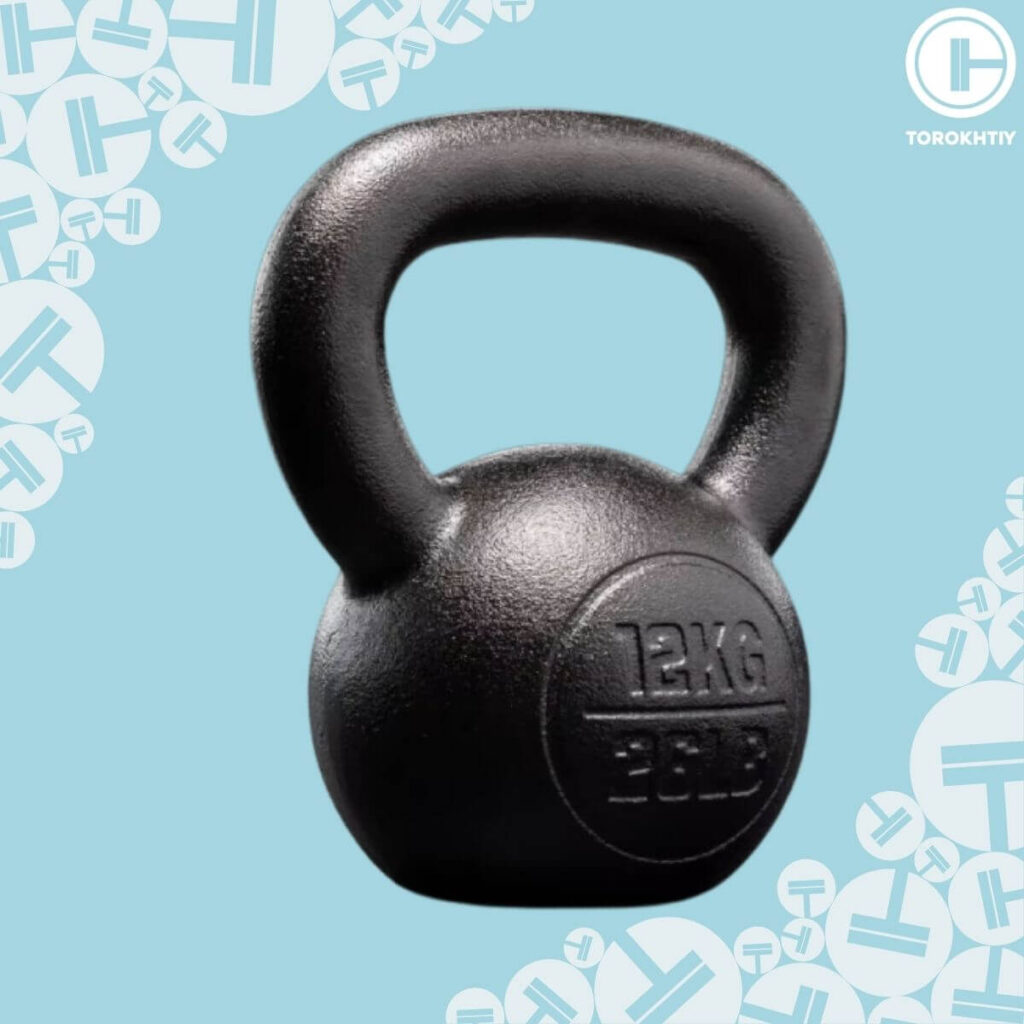


Still have questions after reading our article? Unlock your full potential by engaging with our experts and community! Don’t hesitate — leave a comment below and Ihor Shymechko will provide a personalized answer and insights to help you reach your goals.